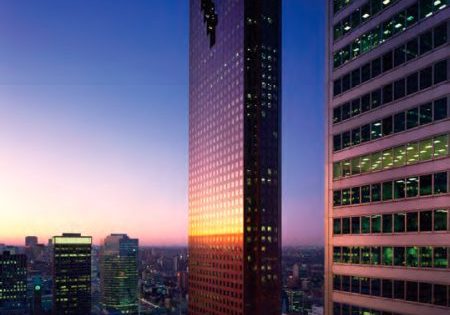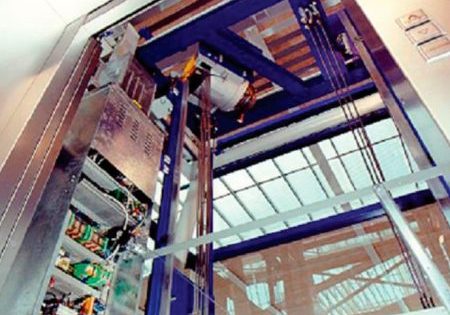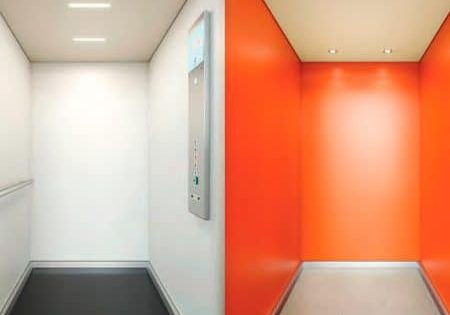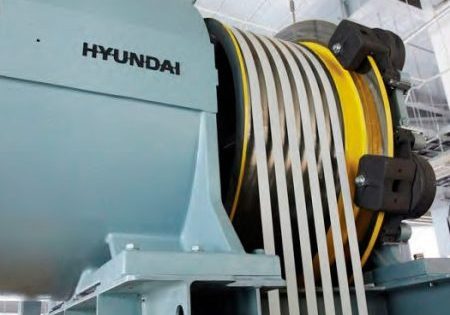10 Questions With Dr. Lee Gray
Aug 1, 2020

Longtime ELEVATOR WORLD correspondent, industry author and academic talks about his history, future and passions.
by Lee Freeland
Dr. Lee Gray (LG), professor of Architectural History and senior associate dean of the College of Arts + Architecture at the University of North Carolina at Charlotte, has written more than 200 monthly articles on the history of vertical transportation (VT) for ELEVATOR WORLD since 2003. He is also the author of From Ascending Rooms to Express Elevators: A History of the Passenger Elevator in the 19th Century. He also serves as curator of theelevatormuseum.org, created by Elevator World, Inc. Here, he talks to your author (LF) about these experiences and what’s next.
LF: When and how did you first become interested in elevator history?
LG: In spring 1982, I was a graduate student in Architectural History at the University of Virginia enrolled in a History of Architectural Technology course that required a research paper.
I decided to write my paper on elevators. Although I don’t remember why I choose that topic, I quickly realized that there was very little information readily available on this topic and that I enjoyed researching it. While writing my paper, I was asked to identify a topic for my master’s thesis, and elevator history seemed reasonable.
LF: When did you first become involved with Elevator World?
LG: While I was pursuing my thesis research, I somehow found a reference to EW. I wrote a letter to EW founder William C. Sturgeon asking if he had any resources he could share with me. He sent me a copy of the 1963 Elevator World Industry Index, which focused on elevator history, and he expressed his support for my thesis investigation.
LF: Did you continue to pursue further investigations into elevator history after completing your thesis?
LG: I graduated in 1983 with my master’s degree in Architectural History and took a teaching position at Fairmont State College (now Fairmont State University) in West Virginia. While there, I pursued additional patent research, gathering the complete patent files (which included letters and patent drafts) for several early elevator patents. While I did not immediately use this new information, it was very helpful when I wrote my book. After three years in West Virginia, I left to pursue a PhD in Architectural History at Cornell University. My dissertation topic was “The Office Building in New York City: 1850 to 1880.” While my topic included elevators, they were not the primary focus of the investigation.
“No other piece of building technology has a comparable presence in the minds of its users. The elevator’s technological development also, of course, represents a fascinating history of engineering design and innovation.”
LF: So, you drifted away from elevator history. What brought you back?
LG: In 1990, I joined the faculty of the College of Architecture (now the College of Arts + Architecture) at the University of North Carolina at Charlotte. One of the expectations of an architectural historian seeking tenure is that they write a book.
I assessed my past work — my thesis and dissertation — and used a simple guiding principle to make my decision on a book topic: what would be the most fun? Elevator history was the obvious choice. (No, I really don’t know why!)
LF: Was the decision to write a history of elevators what brought you back into contact with Elevator World?
LG: Yes. In the late 1990s, I contacted Elevator World again, asking a similar question to the one I had asked in the early 1980s: “Do you have resources you would be willing to share that would help me with my book project?” The response was an enthusiastic yes. Elevator World said it would be happy to open its library to me. Even better, it said it might be interested in publishing my book. From Ascending Rooms to Express Elevators: A History of the Passenger Elevator in the 19th Century was published by Elevator World in 2002.
LF: When did you begin writing articles for EW?
LG: In early 2003, I discussed the possibility of writing monthly articles on the history of VT with Ricia Sturgeon-Hendrick; she agreed this was a reasonable idea, and my first article appeared in July 2003. I think it is safe to say that neither of us imagined that, 17 years later, I would still be writing for the magazine. In fact, having covered several events for EW, I have become one of its correspondents.
LF: You completed your 200th History article for EW earlier
this year. Looking back at the topics you’ve covered, your passion for elevators takes many different forms — films, books, art and even video games! What inspires you to learn about all the facets of the industry?
“What would be the most fun [for my book topic]? Elevator history was the obvious choice. (No, I really don’t know why!)”
LG: Elevators are unique in that they are essentially the only piece of building or architectural technology that people use which is kinetic — they move. Not only do they move, but, for the average passenger, how they move is a mystery, because none of the technology is visible. There is also the magic of the elevator doors, which, all day long, open and close, taking people in and out. These operational aspects have allowed the elevator to assume an extraordinary place in global popular culture. No other piece of building technology has a comparable presence in the minds of its users. The elevator’s technological development also, of course, represents a fascinating history of engineering design and innovation. The student of this history explores how design issues were (and were not) successfully resolved. Additionally, the men and women who invented the modern elevator are often fascinating in their own right.
LF: You have been interviewed by many newspaper and magazine reporters, hosts of numerous radio shows and have appeared in several TV programs. What kind of questions do people ask?
LG: The most common questions are:
- Where (and when) was the first passenger elevator installed?
- Are elevators safe?
- Why are elevators such socially awkward spaces?
- What are the most important innovations in elevator history?
- What’s your favorite elevator? (I don’t have an answer for this one.)
LF: Given your broad understanding of the history of VT, do you think you can predict future trends or innovations? Does history repeat itself?
LG: While there are lessons we can (and should) learn from history, I do not think history repeats itself; life is not that simple. There are, however, critical design and operational challenges that have occupied industry members from the very beginning — most of which concern safety. The future will thus likely resemble the past in their continuing desire to improve various aspects of elevator design and operation and the application of new technologies and materials in VT systems.
Regarding predictions of what’s to come, I don’t think historians should attempt to “tell the future” based on the past. At the same time, some initiatives (or desires) from the past remain very much alive today, as evidenced by MULTI and the 100-plus-year pursuit of a ropeless, multicar, multidirectional elevator system.
LF: Which projects are you working on, besides continuing to write for EW?
LG: I’m working with Elevator World on the publication of a compilation of my articles. I’m also working on a history of escalators and moving walks that will be completed by mid-2021. Long-term projects include a revised edition of my first book, a book on the history of elevators in Europe during the 19th century and a global history of elevators in the 20th century.
Get more of Elevator World. Sign up for our free e-newsletter.









